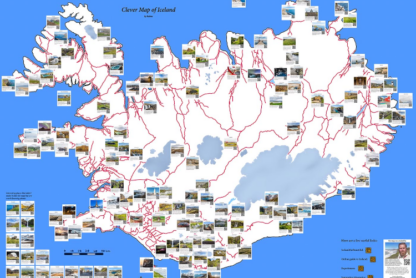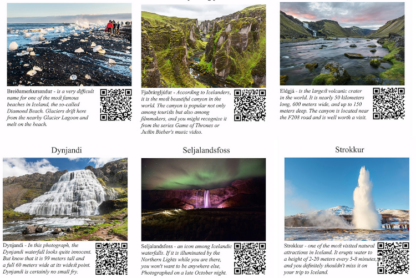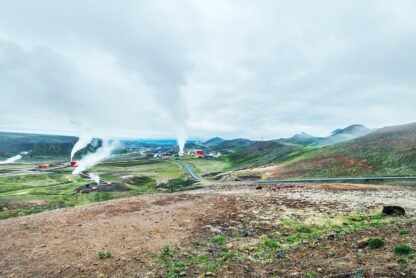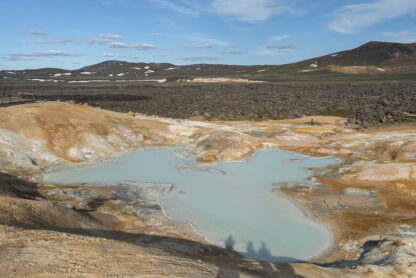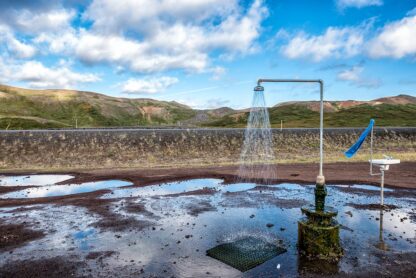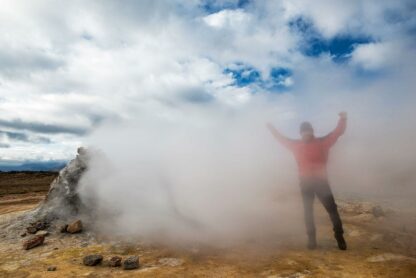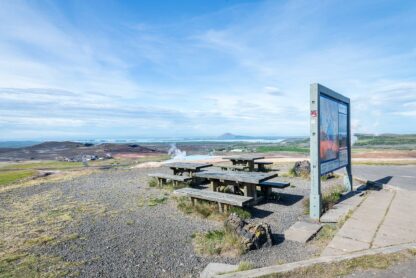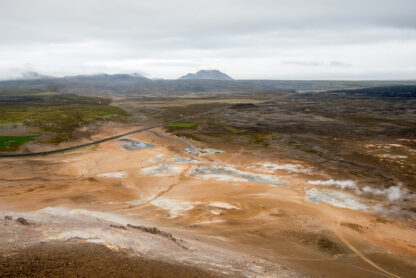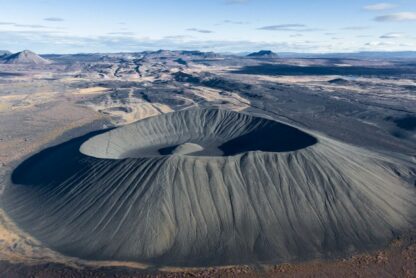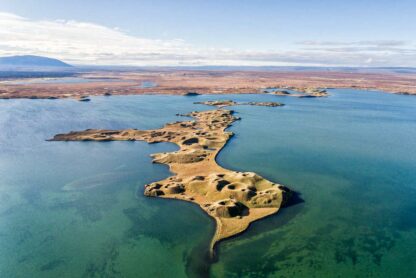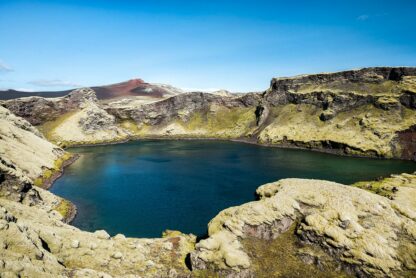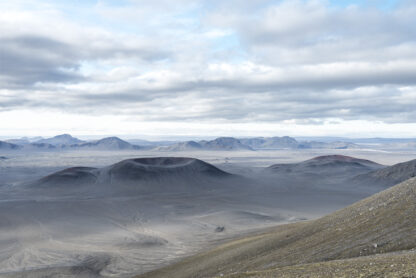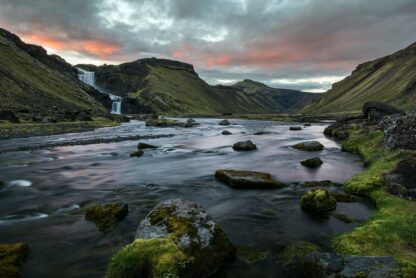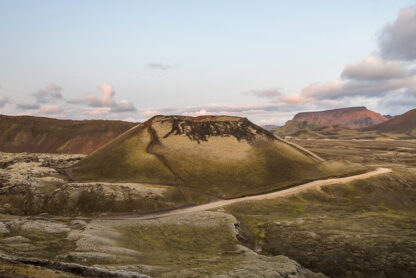The Víti crater is located in the northern part of Iceland within the active volcanic Krafla system, which is approximately 10 km wide and stretches over 90 km. It is one of the most active volcanic regions in the country, with more than twenty eruptions since Iceland was settled.
Víti, which means ‘hell’ in Icelandic, was formed during a massive eruption in 1724, starting a five-year period known as the Mývatn Fires. During this time, lava spewed so intensely that it was reportedly visible from the southern coast. The crater is about 300 meters wide and is now filled with vividly colored turquoise-green water, with its hue caused by minerals from geothermal activity.
The area surrounding Víti is characterized by volcanic landscapes – you can find mud geysers, bubbling pools, and steam vents. The crater is a popular tourist destination, although unlike the similar crater in the Askja volcano, swimming is not allowed here.
Víti has also inspired culture – the famous Icelandic poet Jónas Hallgrímsson dedicated a poem to it, which was set to music by composer Jón Leifs. The piece was later recorded by the Icelandic University Choir.
The Víti crater and lake are easily accessible by car; from the main road no. 1, turn onto road 863 heading north. It’s just a few dozen meters from the parking lot to the crater’s edge. From there, you can walk along the edge and admire the Víti crater and lake from many angles.
There are two Víti craters in Iceland, with the second one located in the Askja area.
